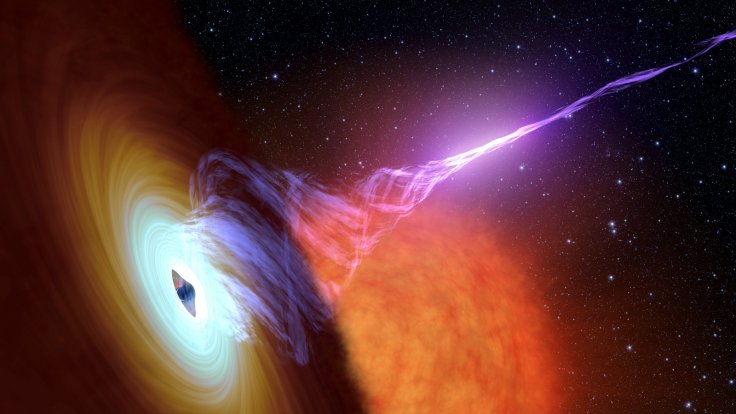
A study carried out by a team of astronomers offered a possible explanation as to how some black holes can continue to grow following a cosmic collision. As explained by the study's authors, some black holes display "Pac-Man"-like behaviour when devouring other black holes.
Most known supermassive black holes in the universe are the result of a collision between two of these cosmic objects. However, there are certain supermassive black holes that continue to baffle scientists due to their immense size. In a new study, which was recently published in Physical Review Letters, a team of astronomers presented a possible explanation as to how these kinds of supermassive black holes were formed.
According to the astronomers, during a collision, the smaller black hole tends to get trapped within the larger one's accretion disk. This is the circular structure that surrounds a black hole where the debris from various cosmic materials such as gas, dust and stars get trapped.
These objects continue to swirl around in the disk until they fall into the centre of the black hole.
Sometimes, as the smaller black hole spins around in the accretion disk, it collides with another black hole, which would then lead to a merger and form a larger one. The newly formed one will then continue devouring every cosmic debris it encounters including other black holes until it becomes exceptionally supermassive.

As per the astronomers, this behaviour can be likened to the popular arcade game "Pac-Man," in which the main character continuously devours everything in its path as it moves forward. Because of which the astronomers referred to the process as "Pac-Man" mergers.
For Richard O'Shaughnessy, the study's co-author and an assistant professor at the Rochester Institute of Technology, he and his colleagues' findings provide a natural explanation as to how certain black holes can grow more massive than others.
"This is a very tantalizing prospect for those of us who work in this field," he said according to SciTechDaily. "It offers a natural way to explain high mass, high spin binary black hole mergers and to produce binaries in parts of parameter space that the other models cannot populate. There is no way to get certain types of black holes out of these other formation channels."









